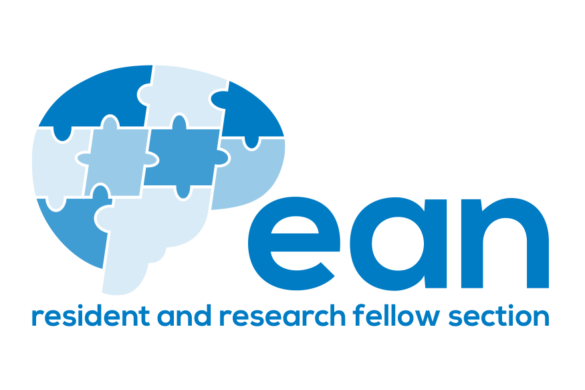by Isabella Colonna
Plenary Symposium 3 at EAN 2022 bore the title Improving lives and reducing burden: what evidence do we need to implement? The session, which took place in front of a large audience in the Main Auditorium was moderated by Prof. Maurizio Leone from Italy.
The first lecture, titled ‘Do neurology trials inform everyday clinical practice? If not, why not and what should be done to make sure that they do?’, was presented by Prof. Carl Clarke from UK. In the first part of his talk, Clarke showed some examples of how scientific evidence informs everyday clinical practice in the fields of stroke, epilepsy, headache, movement disorders, MS, and infectious diseases. However, the results of clinical trials are slow to enter into clinical practice. We can speed up the implementation of clinical trial results by promoting political campaigning through official channels and cause-specific charities, direct negotiations between clinicians and authorities, as well as direct clinical involvement. Furthermore, he highlighted the importance of promoting implementation science in the training programmes of young neurologists, defined as the scientific study of methods, which can be used to transfer research findings into clinical practice in order to improve the quality and the effectiveness of health services. Implementation trials enlarge explanatory clinical trials and pragmatic clinical trials at a population level and focus on patients, providers, purchasers, organisation and policy.
The second lecture ‘How do we ensure the appropriate development and implementation of diagnostic technologies in neurology, and what does the neurologist need to know?’ was held by Prof. Cristina Granziera from Switzerland. In this lecture, Granziera focused on the impact of advanced diagnostic technologies, such as digital sensor technologies and imaging-based technologies, on the diagnosis and management of neurological disorders. It has been shown that digital sensor technologies, such as wearables, smartphones, virtual and augmented reality tools, may help to detect patients’ symptoms and facilitate remote assessment. Recently, a new Parkinson’s severity score has been developed from smartphone assessments through a novel machine-learning approach. Similarly, smartphone-based self-monitoring devices were developed for MS patients. Imaging-based technologies might also play an important role in diagnosis and patient management; however, imaging-based decision support is still a privilege of few centres because of the lack of generability of the developed software as well as of infrastructure and of knowledge among neurologists and neuroradiologists. Thus, neurologists need to be educated about digital sensor and imaging technologies; it is necessary to implement neurology training with educational programmes on advanced diagnostic imaging, neuroinformatics and biomedical engineering.
The third lecture ‘Are guidelines a useful tool for improving outcome in neurology?’ was presented by Prof. Leone. His talk focused on guidelines, which may be defined as the best tools to translate results of clinical research into every-day clinical practice. It has been shown that 40-60% of neurologists are aware of guidelines; however, the adherence to guidelines varies between health professionals and clinical settings. Adherence to guidelines may be evaluated by using administrative data as well as electronic adherence monitoring devices. It would be very important to know if the use of guidelines would improve clinical outcomes; however, systematic reviews on this question in neurological fields are lacking. Randomised clinical trials (RCT), in particular cluster RCT, are urgently needed in order to investigate whether the adherence to neurological guidelines may have a significant impact on patient outcomes. Furthermore, we lack information about whether neurologists are aware of the existence of guidelines. For this reason, guideline developers should be aware that the implementation of guidelines is as important as their production; studies are needed to investigate the barriers to guideline implementation.
The last lecture, presented by Prof. Barbara Tettenborn, was titled ‘How does the general neurologist find what is important and relevant in an era of information overload and increasing complexity?’. Prof. Tettenborn begun her talk by presenting the advantages and the limitations of e-learning in neurology. While online e-learning sources may be easily available and accessible, they are often not peer reviewed and present an overflow of information. A survey conducted by EAN in 2020 including more than 3,000 participants showed that the majority of the responders used online materials to learn neurological content. Thus, the EAN e-learning editorial board in co-operation with the e-learning sub-committees decided to develop a new e-learning platform, the eanCampus, which has been launched at this congress and is now freely available on the website for all individual EAN members. This platform includes high-quality and well-structured content on all educational and scientific levels with a wide range of e-learning facilities; it includes webcasts, interactive cases and modules, guidelines, capstone exams, webinars and virtual masterclasses. Furthermore, short audio talks with two hosts and an additional expert in a specific topic (eanCast) have been recently launched and the first episode is now available.













